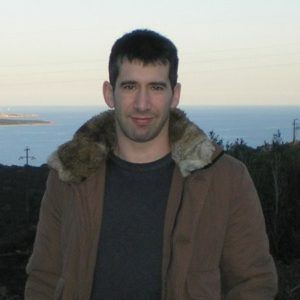Dr. Adam Halberstadt is an Associate Professor of psychiatry at the University of California San Diego (UCSD). He is a founding member of UCSD’s Psychedelics and Health Research Initiative (PHRI). A year after earning his Ph.D. in neurobiology from the University of Pittsburgh in 2006, Dr. Halberstadt joined UCSD as a postdoctoral fellow. He received his Bachelor’s in neuroscience from the University of Delaware. His research on serotonergic hallucinogens has been funded by prestigious awards from the National Institute of Mental Health and the National Institute of Drug Abuse, including a K01 (Mentored Research Scientist Career Development Award), an R01 (Research Project Grant), and a National Research Service Award fellowship.
According to a June 2020 interview with Psychedelic Finance, Dr. Halberstadt’s interest in psychedelics and receptor pharmacology arose in middle school at the peak of the D.A.R.E. era. He asked a presenter about LSD’s effects on the brain and was surprised to learn that the origins of hallucinations were unknown. Upon embarking on his own research, he discovered a wealth of existing information about the receptor-level activity with psychedelics.
Today, Dr. Halberstadt studies how serotonin systems interact with psychedelics and the resulting implications for psychedelic therapy. PHRI is running a clinical trial to test whether psilocybin is effective for phantom limb pain.2
He contributed to a 2011 pilot study of psilocybin’s potential to treat terminally ill cancer patients led by Dr. Charles Grob.1 The study earned coverage in Vox News, The Scientist, and The Pharmaceutical Journal, among other media outlets. He also contributed to research by PHRI that evidenced analgesic effects of psychedelics on chronic pain.
Psychedelic Science Review cited Dr. Halberstadt’s work in articles describing the structure and function of serotonin receptors 5HT2C and 5HT1A. One 2009 study explored how receptors respond to different doses of the hallucinogenic amphetamine DOI.3 A literature review from 2011 showed significant behavior changes as a result of indoleamine hallucinogens activating 5HT1A receptors.4 Another study found that decreases in locomotor activity in mice treated with DMT and psilocin are mediated by 5HT1A.5
Psychedelic Science Review wrote about a December 2020 publication out of Halberstadt’s lab that explored the structure-activity relationships of tryptamine compounds that are analogs of psilocybin.6 Dr. Halberstadt’s lab has recently made significant advancements in understanding the pharmacology and bioactivity of several other lesser-known psychedelic derivative compounds, such as 5-MeO-DALT,7 1P-LSD, 1B-LSD, ALD-52, and baeocystin. More about 5-MeO-DALT from Psychedelic Science Review can be read here. PSR also covered the lab’s findings that baeocystin is not psychedelic8 and that ALD-52, 1P-LSD, and 1B-LSD are prodrugs of LSD.9
Among his team’s most notable achievements is the development of an efficient, automated head-twitch response (HTR) preclinical assay that helps screen novel psychedelic compounds.10,11 HTR is based on serotonergic receptor 5HT2A activity –and corresponding hallucinations– under the influence of psychedelics. Dr. Halberstadt explained to Psychedelic Finance that for psychedelic substances to successfully enter the pharmaceutical market,
the key is going to be to identify ways to maximize the therapeutic value of new psychedelic medications, for example by identifying compounds with improved efficacy, better selectivity profiles, or more targeted effects.”
Dr. Halberstadt discussed the resurgence and expected trajectory of psychedelic research and psychedelic assisted therapy on a November 2020 webinar hosted by PHRI and gave a presentation entitled Psychedelic Therapy in Society: Exploring the Mechanisms of Action and Delivery of Care at the 2019 International Forum on Consciousness.
In 2012, he authored the piece Do Psychedelics Expand the Mind by Reducing Brain Activity? for Scientific American. With fellow psychedelic researchers Dr. David Nichols and Dr. Franz X. Vollenweider, Dr. Halberstadt edited the textbook Behavioral Neurobiology of Psychedelic Drugs. He is a member of the International Union of Basic and Clinical Pharmacology’s (IUPHAR) Serotonin Receptor Nomenclature Committee, the American College of Neuropsychopharmacology (ACNP), and the International Society for Serotonin Research, for which he serves as the Associate Councilor for North America.
More information about Dr. Adam Halberstadt and his research can be found on his UCSD profile.
